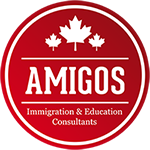Temporary coronavirus measures make it impossible to renew Canada work and study permits by crossing the U.S. border.
As a result of Canada’s directives aimed at limiting the spread of coronavirus, foreign nationals can not longer apply for a temporary visa, such as a work permit, study permit or visitor visa, by flagpoling.
Flagpoling refers to a process whereby foreign nationals inside Canada go to the Canada – US border, enter the US briefly, and then apply for a visa upon re-entering Canada.
There are a few key advantages to applying for a visa through this method, and each highlights the additional care and attention that must be given to applications now that flagpoling is not an option.
Bypassing processing times
When a visa application is submitted through the consulate or at a visa office, processing times can be lengthy, depending on the type of visa and where the application is submitted.
By contrast, when you flagpole, your visa application is processed on the spot so you typically know the result of your application that same day.
Because this is not possible now, it is important that visa applications be done right the first time. It would be a waste of time to submit an application only to find out weeks later that a document was missing or an incorrect form was filled out. The additional processing time could have dire consequences in time-sensitive immigration situations.
Easier application process
When you flagpole you do not need to worry about where to submit your application, or whether to apply online or on paper. Instead, you hand the required documents to a person standing in front of you, and the visa application is processed while you are physically present. If there is a document missing or the incorrect fee was paid, the immigration officer can let you know and the error can be rectified without delay.
Now that flagpoling is not an option, a trivial mistake or a simple clerical error can cause an application to be delayed. It is essential to submit an application to the correct visa office in the correct manner. Failure to do so could result in wasted application fees and wasted time, not to mention potential refusals that could have been easily avoided.
You can make your case beyond the contents of your application
When you are flagpoling, you are dealing face to face with a human being. So if there are doubts about your eligibility or questions about your intentions to apply for a particular visa, these can be discussed with the authority who will decide the outcome of your application.
Without flagpoling there is no opportunity to explain the particulars of an application, nor is there the chance to refute a potential motive of refusal put forth by the immigration officer. The understanding and clarification that can be provided through dialogue is lost without that personal interaction. As it stands now, applying for a visa is a more formal process in which there is less leeway in terms of subjective assessment and the discretion of the immigration officer plays a less important role.
For all the reasons mentioned above, now more than ever it is important to submit a perfect application. Be as clear as possible with respect to the satisfaction of the eligibility criteria. Do not leave room for the immigration officer to doubt as to why you are seeking the particular type of visa for which you are applying, or why you are using a certain application method.
Because the application process involves no face to face human interaction, visa officers are likely to be less forgiving in the consideration of applications. Also, there is far less room for error when completing and submitting these applications.
.
.
La noticia original la podrás encontrar en:








